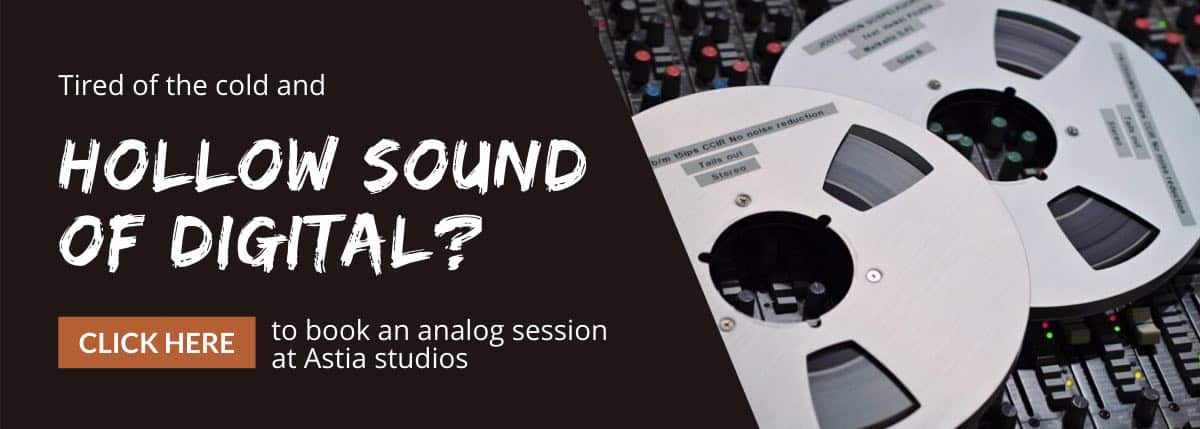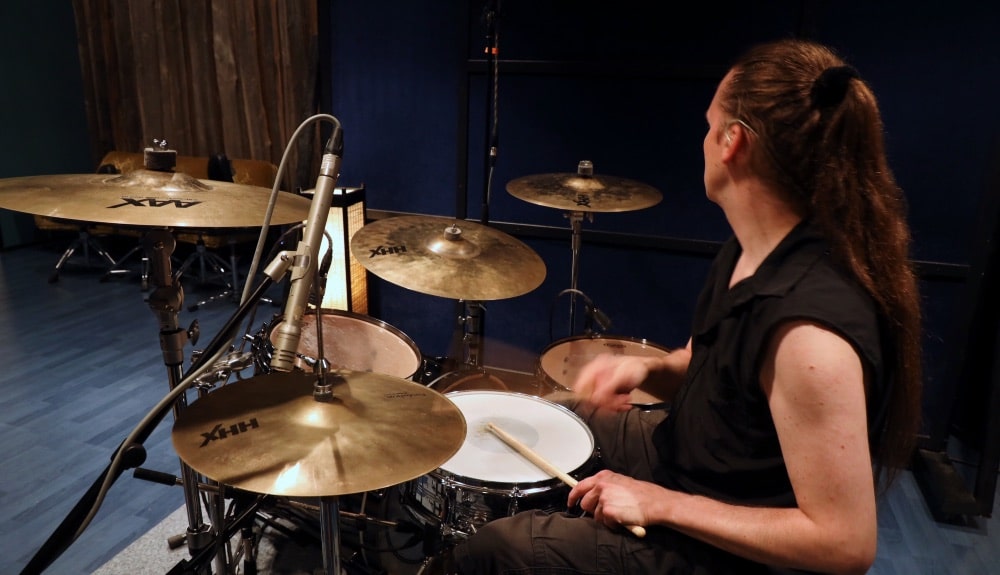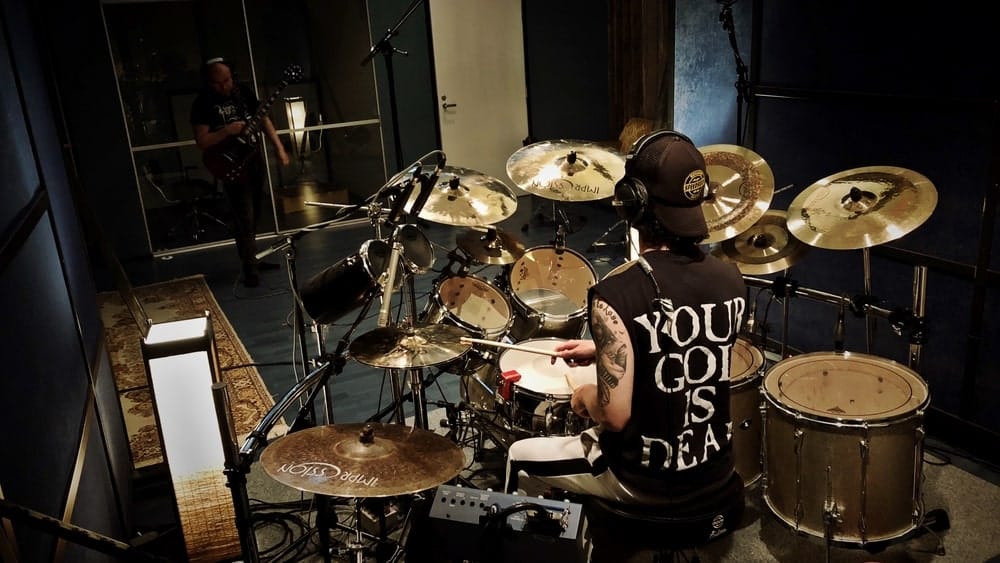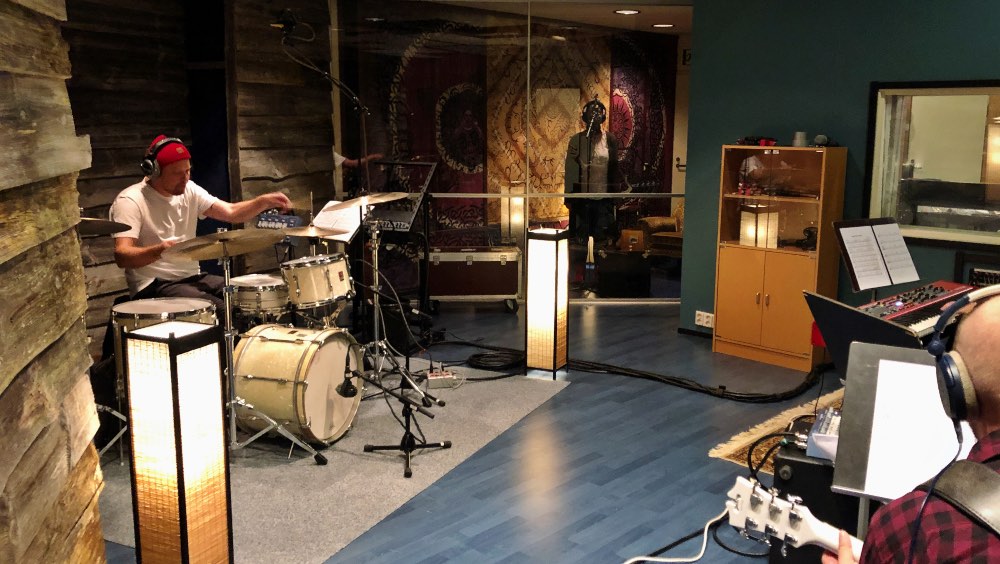Drummer! Avoid this common drum monitoring mistake when recording
Let’s continue with my most favorite topic; drum sound and this time drum monitoring to be exact. By reading you’ll learn how you can improve the drum recording with a simple drum monitoring tip. Drummer! Avoid this common drum monitoring mistake when recording.
This blog post delivers useful insight for both drummers and recording engineers.
Drummer! Avoid this common drum monitoring mistake when recording
One of the most important things that affects the quality of your recording is the monitoring. This time we won’t be talking about the control room listening system as we’ll be concentrating on the monitoring for the drummer.
The basis of my playing is mostly about how I hear things; mine and all the other instruments. Monitoring is essential when you want to achieve the best result.
–Toni Paananen, session drummer
When in the early 90’s I started recording, there was no way I could afford top-notch pro gear at once. So I used what was at hand like affordable home-use headphones. Along the years and after testing various models I ended up getting the ones that the musicians liked as well.
The importance of monitoring is best understood once you’ve done countless sessions using both the gear that works and especially the gear that doesn’t.
Drum monitoring and the balance
It’s important to get the balance right. It’s pretty challenging to deliver the best take ever if you cannot hear yourself or when the monitoring is out of balance. One of the most common mistakes is to have your instrument way too loud while others are buried in the background.
The correct balance is essential when recording. Especially if you play live with other musicians it’s fundamental when getting into the correct mood.
If you record the drums alone to the already recorded tracks you should hear them right.
–Risto Niinikoski, rumpali / Vain elämää, Egotrippi
When it comes to the balance it’s interesting to know how the top Finnish drummers like Mr Anssi Nykänen and Mr Harri Ala-Kojola do not want to hear the drums in their headphones. They tend to prefer monitoring the drums acoustically aka leakage through the headphones.
Yet, why is it so that they don’t want any drums on the headphones? What secrets do the highly experienced studio musicians know compared to the younger generation?
Recording engineer sets the balance
Somewhere along the way we came up with the idea to get the acoustic earmuffs. They have cups lined with sound-deadening material and built-in speakers aka protective headphones. This was a great way to minimise the acoustic sound and allowed the drummer to hear only the drum balance created by the sound engineer.
Well, now this was great. The drummer could hear himself only via headphones so we made the balance according to the sound engineer’s likings. This is how we recorded the drums for several years.
At some point I started to question my methods. What if this wasn’t the best possible way after all and could there be a better way? A way that would help the drummer to play his drum set in better balance?
The ear protector dilemma
In case you use earmuffs when playing the drums, have you considered the fact that you cannot hear the set balance of the acoustic kit? And if you cannot hear it, then it’s pretty challenging to play in a perfect balance and to keep all snare hits nice and steady.
You may hit the cymbals way too loud as you cannot hear how they sound acoustically. The use of earmuffs doesn’t affect only the set balance but also the control. They do reduce the amount of all the small nuances in your drumming.
Consider it like this. Imagine if you’d paint a picture with your eyes tied and couldn’t see the brush nor the canvas. Then you’d have virtual goggles to help you see, but with a delay and a twisted colorscheme. Try to give your best shot and deliver the most beautiful painting ever…
Sometimes I bumped into a situation where the drummer or another member would first put on earplugs. And then it was the earmuffs with the level cranked up all the way. This is a great way if you want to break the equipment. You shouldn’t even consider doing such so please, never use earplugs underneath the headphones.
Yet, what if the acoustic sound of the drums leaking through the headphones wasn’t an enemy but a friend?
The leakage is good
Instead of the sound-isolating muffs I started testing with closed, semi-open and open headphones when recording the drums. To my pleasant surprise the balance of the drummers’ started to improve significantly. They too seemed to sense something positive as the feedback was so encouraging that I quit offering the earmuffs to drummers.
I mainly use the so-called basic version of in-ear monitors, which don’t block the acoustic sound of the drum set.
–Toni Paananen, session drummer
You too should use closed or semi-open headphones. This will help you to hear your set balance more accurate. And then again, if the delay of the A/D and D/A conversion in computer recording feels annoying, you can ask the recording engineer to mute the drums and have only for example bass and guitar there.
Even the closed headphones allow you to hear your drums acoustically when the volume is right on both the playing and listening departments. As a nice bonus, the metronome isn’t cutting through to the drum mics too much.
I prefer custom cast in-ear monitors. They sound familiar and feel safe.
–Risto Niinikoski, rumpali / Vain elämää, Egotrippi
As you might remember, I recommend using the metronome for two bars in the beginning of the song only. This will help you to start the song each time on the right tempo. Yet, if you must have it for the whole song, try keeping the level pretty low.
Sennheiser HD-25 works great. They let just the right amount through, yet aren’t too open from which you wouldn’t hear the metronome.
–Tomi Salesvuo, rumpali / Tomi Salesvuo East Funk Attack, XL
When you are slaved to a super loud metronome in the headphones, it usually removes both the energy and accuracy from your playing. When you play perfectly on the beat, you cannot hear the metronome at all. Drift apart even slightly and you’ll notice it immediately. When you now make a fast change to adapt, your groove sounds sloppy. If you have the metronome quiet in the background, you can smoothly drift away from it. Yet it’s easy to make soft changes to catch up again.
I’d rather use closed or semi-open headphones that allow me to hear the drums acoustically. Isolating earmuffs kill the natural sound and that can create an unwanted illusion of both the sound and balance.
–Tommi Tuhkala / Spell Of Torment
Here’s a cool tip for the recording engineer. What if during recording you wouldn’t have the metronome on, but concentrate only on the drums? Each hit doesn’t necessarily have to be on the grid as that’s the beauty of it; the musician isn’t a machine. You should also only listen instead of the visual inspection. Our eyes are deceiving and make us hear the swaying once we just literally see it.
Read also: To Metronome Or Not
Noise-cancelling headphones
A couple of times the artist has brought noise-cancelling headphones to the session to use them during the basic track recording. If a guitar amp for example leaks the tiniest bit from the amp room, it can create a nasty ring modulator-ish sound thanks to the processing of the noise-cancelling headphones.
Surely you can try if they work on your session. But based on my experience, here also the old thing seems to work much more smoothly.
Drum monitoring when recording
I recommend you to avoid the use of earmuffs and to take advantage of the acoustic sound of your drum set leaking through the headphones during recording. The earmuffs tend to sound unnatural and make your set balance worse.
I built the balance based on the acoustic sound. The only difference is the bass drum which is louder from the acoustic drum set.
–Toni Paananen, session drummer
And what if you wouldn’t crank the headphone level all the way, yet turn it down instead? So you shouldn’t make your ears ring, but keep the levels moderate. This way the sound coming from the headphones supports your playing. Also avoid using both the earplugs and the headphones at once.
Hearing the drums on top of the mix on the headphones isn’t my cup of tea. I’d rather feel the drums and the rest of the band compared to focusing only on what I do.
–Petri Pakarinen, drums / Wizards Of Hazards
I hope these tips will improve both the drum recording and especially the monitoring. Please try my tips on several sessions as you might need some time to get used to using the acoustic sound. Eventually it will help to improve the balance of your playing and while at it, improve the sound of your drumming.
I usually aim for the so-called album balance. It’s something that to me sounds pretty much like the completed mix. Sometimes drums are loud, sometimes quiet – just like on the records. This has a surprisingly huge effect on not only your playing but also the overall sound.
–Risto Niinikoski, rumpali / Vain elämää, Egotrippi
Thank you for letting me share this tip that improves the drum recording. If this blog post was helpful, please share it on social media. This way you’ll help your friends to benefit from this information too.
When recording I keep the headphone level low to hear the natural sound of the drums. That also allows me to bring more emotion to my playing as the drum set sounds like it did at the rehearsal place.
–Tommi Tuhkala / Spell Of Torment
To experience your drums in great detail arrive for a full analog tape recording session with me at Astia-studio by clicking here and let’s continue the discussion. Thank you very much and all the very best!
Astia-studio is a full analog recording studio located in eastern Finland with over 25 years of experience. Bands and artists from all over the world including USA and the furthest corner of Russia, Vladivostok have arrived to us for tape recording sessions.








